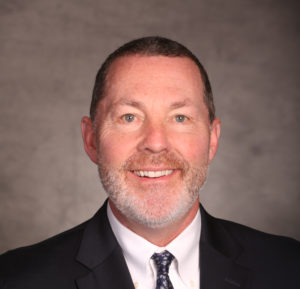
Gerber parent company on OEM certification, intake centers, ‘-field’ expansion
By onBusiness Practices | Market Trends | Repair Operations
The majority of the Boyd Group’s work isn’t sourced through the company’s OEM certifications, but the company sees such efforts as positioning it in the right place when “the influence may shift,” Chief Operating Officer Tim O’Day said last month.
“I would say it’s not significant today,” O’Day described OEM certification’s role in bringing in work during a Nov. 13 earnings call for the company, whose subsidiaries include Gerber Collision, Boyd Autobody and Assured Automotive.
An analyst had also asked if OEM certifications favor parts replacement over repairs. (Replacing parts tends to have a lower margin than repairing them.)
“Our commitment is really to do a quality repair as cost-effectively as we can, and we still will use alternative parts to manage repair cost appropriately,” O’Day said.
Some automaker certifications emphasize OEM parts, and if this happened and was the “right thing to do for the customer, we would do that,” he said. “But I think we have an obligation to make sure that we’re managing repair cost effectively.”
O’Day — who will become CEO on Jan. 1, 2020 — offered insights into the company’s thought process on other business concepts too.
Intake centers
He said he felt intake centers — storefronts used to capture work which would actually then be performed offsite in true collision repair facilities — tied in naturally to the company’s OEM certification strategy.
Boyd Group subsidiary Assured Automotive had housed 30 such facilities on auto dealership property when Boyd announced plans to buy the company in May 2017. Assured had demonstrated success with the model, Boyd said then.
However, the Boyd Group’s pace of adding more intake centers has been “very modest,” partly because of technician capacity constraints, O’Day said. Like other repairers, the company doesn’t have enough staff to accomplish all the work it would like.
“We do see opportunity there,” O’Day said of intake centers. He said he expected more intake center growth in areas where tech capacity was available or could be rapidly improved.
Expansions
O’Day said “our pipeline is very healthy” for future acquisitions, including both MSOs and single-shop operations. The company had added 92 locations to date this year and still had $250 million available to buy more facilities, CEO Brock Bulbuck said earlier in the call.
Chief Financial Officer Pat Pathipati said the company had a 1.9x net debt-to-equity ratio and was comfortable pushing that as high as 2x-2.5x (i.e., borrowing more to buy stuff). For the right opportunity, it might exceed that.
Asked what contributed to the higher pace of acquisitions in 2019, Pathipati said acquisitions simply come in “lumps.” Sometimes, there’s few, sometimes there’s many, he said.
However, he also said the company continued to expand its development team.
O’Day said that as the Boyd Group considered new markets, it was attractive to find a platform that offered the opportunity for single-shop or greenfield expansion.
A “tremendous amount of open territory” remained in the U.S., according to O’Day. A Nov. 28 investor presentation put the company at 537 U.S. locations in 27 states.
“I think … we have enough opportunity that we don’t narrow it down to a particular geographic area,” he said.
Areas with relationships and opportunities would be focuses, he said — they provide a good platform and chance to grow.
The company might grow in other ways than buying an operating collision repairer. O’Day indicated more greenfield (building from scratch) and brownfield development (converting an existing site) could be coming. Pathipati said that such activity has been a “more recent” focus for the company.
O’Day said he expected such expansions to make up a “bigger share” of overall growth. Greenfield and brownfield development made “tremendous sense” for any market with core operations and leadership in place, according to O’Day. It was an attractive opportunity to build out a market, he said.
However, the Boyd Group will balance this with the longer time to get a greenfield or brownfield operation up and running, according to Bulbuck. If there’s an “immediate need,” the company will just buy an existing shop, he said.
More information:
Boyd Group third-quarter 2019 earnings call
Boyd Group, Nov. 13, 2019
Boyd Group third-quarter earnings report
Boyd Group, Nov. 13, 2019
Featured image: Boyd Group Chief Operating Officer and soon-to-be CEO Tim O’Day. (Provided by Boyd Group)
